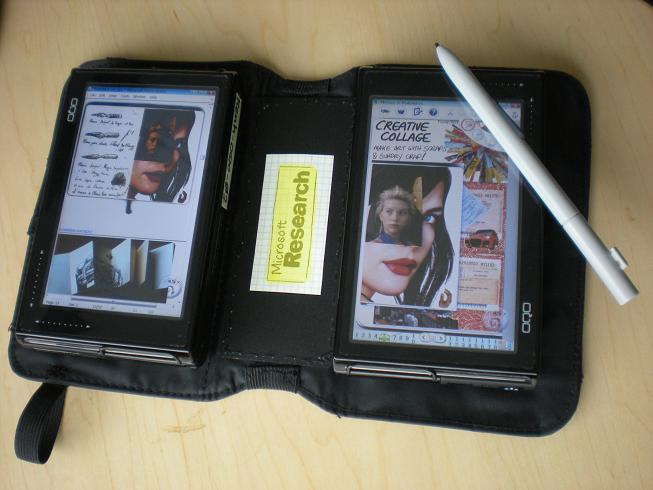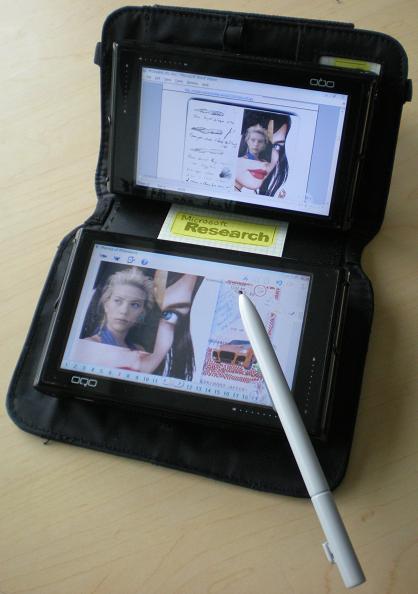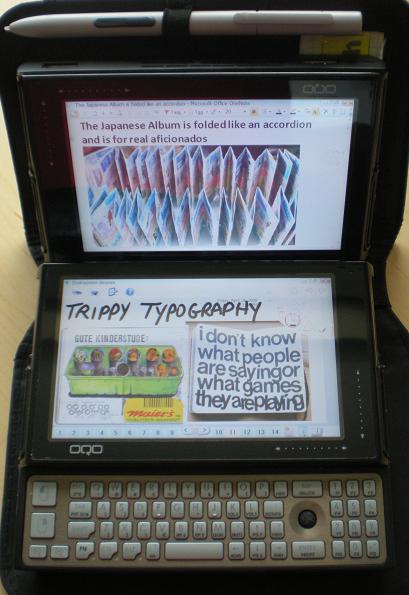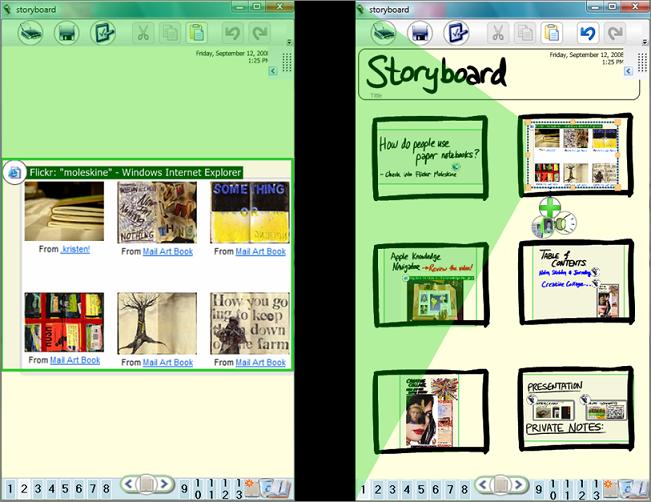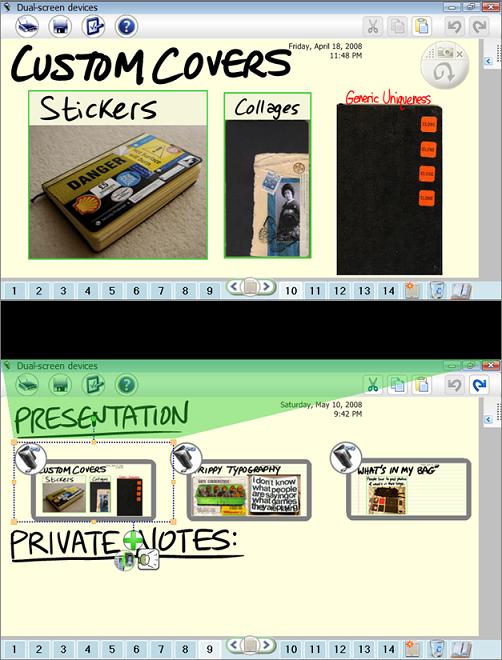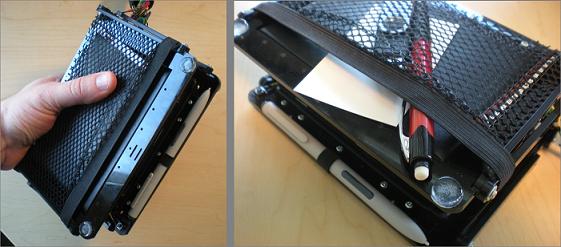Microsoft Research Codex: Dual OQO Touchscreen Digital Book
Ken Hinckley, of Microsoft Research, has been working on a dual-touchscreen multi-tasking prototype called Codex, taking two of OQO's Model 2 UMPCs and using intelligent software to manage how information is spread between the displays. Rather than manually positioning different windows on a single large screen, Ken's concept recognizes that, say, reference and in-progress documents are more appropriately separated for efficiency; it can therefore automatically adjust them to fit the two touchscreens.
More than that, however, the two OQO UMPCs are constantly interconnected, meaning that text, images and other media on one can be copied over to the other. Ken suggests a scenario where research on the left screen can be clipped and moved to the notes on the right:
"I just take a snapshot from the collection on the left screen and it appears in my notes on the right screen, where I can arrange it and mark it up as I see fit. I can scroll back and forth on the left screen to find a photo that meets my current needs, while the page that I am authoring on the right screen always remains visible. The two screens are invaluable because I always have the reference material in the context of what I am working on, instead of feverishly flipping between them on a single screen" Ken Hinckley, Microsoft Research
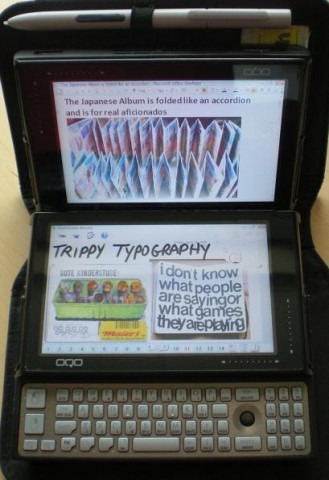
Alternatively, for document review, a consistent contents or index page can be kept on the left side while the pages themselves are brought up on the right. Thanks to the orientation sensors in the UMPC, different setups of Codex can be switched between: landscape, holding it like a book; portrait, in a more traditional laptop posture with one OQO keyboard extended; or opened back on itself, to show a presentation with notes on the reverse.
Of course, not everyone can afford even one UMPC, never mind two, but this is yet another intriguing suggestion of where "companion devices" could be heading.

